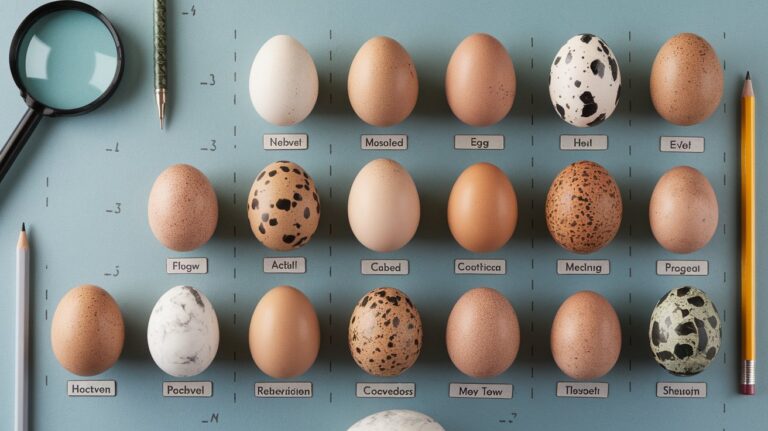Bird Identification by Sound: Complete Guide & Best Apps 2025
Bird identification by sound has revolutionized birdwatching, allowing enthusiasts to identify species without visual contact. With advanced bird identification by sound apps like Merlin Bird ID and BirdNET, anyone can accurately identify birds using just their smartphone. This comprehensive guide covers the best free tools, techniques, and expert strategies for mastering bird identification by sound in 2025.
Best Free Bird Identification by Sound Apps in 2025
The landscape of bird identification by sound apps has evolved significantly, with several free options now available to users across the United States. These applications use advanced artificial intelligence and machine learning algorithms to analyze audio recordings and provide accurate species identification. The most popular and effective apps include Merlin Bird ID, BirdNET, and eBird, each offering unique features for different skill levels and preferences.
These free bird identification apps have democratized birdwatching, making it accessible to millions of Americans who previously relied solely on visual identification. According to 2024 data from the Cornell Lab of Ornithology, over 15 million people in the United States now use smartphone apps for bird identification, with sound-based identification growing by 35% annually since 2022.
Merlin Bird ID by Cornell Lab Features
Merlin Bird ID by Cornell Lab stands as the gold standard for bird identification applications, offering comprehensive sound identification capabilities completely free of charge. The app contains over 300,000 bird sounds from more than 2,000 species found in North America, with regular updates adding new recordings and improving accuracy. Users can record bird sounds directly through the app, which then analyzes the audio using Cornell’s vast database of verified bird calls and songs.
BirdNET Sound Recognition Technology
BirdNET represents cutting-edge technology in automated bird sound recognition, developed jointly by Cornell Lab and Chemnitz University of Technology. This free application processes audio recordings in real-time, providing instant species identification with confidence scores. The app’s neural network has been trained on over 3,000 bird species globally, making it particularly effective for identifying common North American birds as well as rare visitors.
How to Identify Birds Based on Sound Characteristics
Understanding how to identify a bird based on sound requires learning the fundamental characteristics that distinguish different species’ vocalizations. Bird sounds can be categorized into songs, calls, and mechanical sounds, each serving specific purposes in bird communication. Songs are typically longer, more complex vocalizations used for territory establishment and mate attraction, while calls are shorter sounds used for communication, alarm, or coordination.
The key elements to focus on when learning bird identification by sound include pitch, rhythm, duration, and repetition patterns. High-pitched sounds often come from smaller songbirds like wrens and chickadees, while lower-pitched calls typically belong to larger birds such as owls, hawks, and crows. Rhythm patterns vary significantly between species, with some birds producing rapid trills while others deliver slow, deliberate notes.
Analyzing Bird Song Patterns and Frequencies
Effective bird identification by sound requires understanding the specific frequency ranges and patterns that characterize different species. Most songbirds produce sounds between 1,000 and 8,000 Hz, though some species like Brown Creepers can reach frequencies above 10,000 Hz. Learning to recognize these frequency differences helps distinguish between similar-sounding species, particularly in areas with high biodiversity where multiple species may be vocalizing simultaneously.
Common Bird Call Categories and Meanings
Bird calls serve various functions, and understanding these purposes enhances bird identification by sound accuracy. Alarm calls are sharp, often repetitive sounds used to warn of predators or threats, while contact calls help birds maintain communication with flock members. Flight calls are brief sounds made during migration or movement, and these are particularly useful for identifying bird noises from species that may not be easily visible during dawn or dusk hours.
Google Bird Sound Identification Capabilities
Many users wonder can Google identify bird sounds, and the answer involves understanding Google’s current capabilities and limitations. While Google Assistant can identify some common sounds, including certain bird species, its accuracy for bird identification remains limited compared to specialized applications. Google’s sound recognition works best with very distinct, clear recordings of common species, but struggles with complex soundscapes or less common birds.
However, Google’s integration with various bird identification apps through the Google Play Store provides users with access to powerful third-party solutions. The search giant has partnered with conservation organizations to improve wildlife identification tools, though dedicated apps like Merlin Bird ID and BirdNET currently offer superior accuracy for bird identification by sound purposes.
Advanced Techniques for Sound-Based Bird Identification
Mastering advanced bird identification by sound techniques requires practice with real-world scenarios and understanding environmental factors that affect sound quality. Experienced birders learn to identify birds even with partial or distant sounds by focusing on distinctive elements like timing, context, and associated environmental cues. Weather conditions, time of day, and seasonal variations all influence bird vocalizations and identification success rates.
Professional ornithologists recommend developing a systematic approach to bird identification by sound that includes noting the habitat where sounds are heard, time of day, and any visible bird behavior. This contextual information significantly improves identification accuracy, particularly when using apps that may suggest multiple possible species for ambiguous recordings.
Recording Quality and Equipment Considerations
Achieving successful bird identification by sound often depends on recording quality, making proper technique and equipment essential for accurate results. Modern smartphones provide adequate recording capabilities for most situations, though external microphones can significantly improve sound quality for distant or quiet birds. The key factors include minimizing background noise, positioning the device appropriately, and recording for sufficient duration to capture characteristic sound patterns.
Seasonal and Geographic Variations in Bird Sounds
Understanding seasonal variations enhances bird identification by sound success, as many species alter their vocalizations throughout the year. Spring breeding seasons typically feature the most complex and frequent songs, while fall and winter periods may reveal different call types used for flocking and foraging communication. Geographic variations also exist, with the same species potentially having distinct dialects or call variations across different regions of the United States.
Comparing Top Bird Identification Apps in 2025
The competitive landscape of bird identification by sound apps continues evolving, with each major application offering distinct advantages for different user needs. Comparative analysis shows that while Merlin Bird ID excels in comprehensive species coverage and Cornell Lab backing, BirdNET provides superior real-time analysis capabilities. eBird Mobile complements sound identification with citizen science features, creating a comprehensive birding ecosystem.
Performance metrics from 2024 studies indicate that the best free bird identification apps achieve accuracy rates between 85-95% for common North American species under optimal conditions. However, accuracy decreases with background noise, distant recordings, and less common species, highlighting the importance of understanding each app’s strengths and limitations.
Feature Comparison and User Experience
When evaluating bird identification by sound apps, user interface design and feature accessibility play crucial roles in practical effectiveness. Merlin Bird ID offers intuitive recording interfaces with immediate playback and comparison features, while BirdNET provides detailed confidence scores and alternative species suggestions. The best apps combine accurate identification algorithms with user-friendly interfaces that encourage regular use and learning.
Accuracy Rates and Performance Testing
Independent testing of bird identification by sound applications reveals significant variation in performance across different scenarios and species. Research conducted in 2024 across various North American habitats showed that accuracy rates range from 70% for challenging recordings with background noise to over 95% for clear, close-distance recordings of common species. Understanding these performance characteristics helps users set appropriate expectations and develop effective identification strategies.
Building Skills for Manual Bird Sound Recognition
While bird identification by sound apps provide powerful tools, developing manual recognition skills remains valuable for serious birders and naturalists. Learning to identify common species by ear without technological assistance deepens understanding of bird behavior and ecology while providing backup capabilities when apps are unavailable. This skill development process involves systematic listening practice, mnemonic devices, and gradual exposure to increasingly diverse species.
Expert birders recommend starting with the most common local species and gradually expanding recognition abilities to include seasonal visitors and rarer species. This approach builds confidence and creates a foundation for understanding the broader patterns in bird identification by sound that transcend individual species recognition.
Related video about bird identification by sound
This video complements the article information with a practical visual demonstration.
Your questions answered
Is there a free bird identifier by sound?
Yes, several excellent free bird identifier apps use sound recognition technology. Merlin Bird ID by Cornell Lab and BirdNET are the most popular free options, offering accurate identification of thousands of bird species. These apps use advanced AI to analyze recorded bird sounds and provide instant species identification with high accuracy rates for common North American birds.
Can Google identify bird noises?
Google Assistant has limited bird sound identification capabilities compared to specialized apps. While it can recognize some common bird sounds, dedicated applications like Merlin Bird ID and BirdNET provide significantly better accuracy and more comprehensive species coverage. Google’s strength lies in connecting users with these specialized bird identification tools through the Play Store.
How to identify a bird based on sound?
Bird identification by sound involves analyzing key characteristics including pitch, rhythm, duration, and repetition patterns. Start by noting whether the sound is a song or call, observe the habitat context, and use apps like Merlin Bird ID for verification. Practice with common local species first, focusing on distinctive features like timing patterns and frequency ranges to build recognition skills.
Is the Merlin bird app free?
Yes, Merlin Bird ID by Cornell Lab is completely free with no premium features or subscription requirements. The app includes access to over 300,000 bird sounds, photo identification, range maps, and eBird integration. All features remain free as Cornell Lab’s mission focuses on education and conservation rather than commercial profit.
What is the most accurate bird identification by sound app?
Merlin Bird ID by Cornell Lab is widely considered the most accurate bird identification by sound app, with accuracy rates exceeding 90% for clear recordings of common species. BirdNET also provides excellent accuracy with advanced neural network technology. Both apps are free and regularly updated with new recordings and improved algorithms for better performance.
How does BirdNET compare to other bird identification apps?
BirdNET excels in real-time sound analysis and provides detailed confidence scores for identifications. While Merlin Bird ID offers more comprehensive features including photos and range maps, BirdNET focuses specifically on sound recognition technology. Both apps are free and complement each other well, with many birders using both for cross-verification of identifications.
| App/Method | Key Features | Best Use Case |
|---|---|---|
| Merlin Bird ID | 300,000+ sounds, photos, range maps | Comprehensive bird identification |
| BirdNET | Real-time analysis, confidence scores | Instant sound recognition |
| Manual Recognition | No technology required, deep understanding | Field birding without devices |
| Google Assistant | Basic sound recognition, limited species | Simple identification of common birds |






